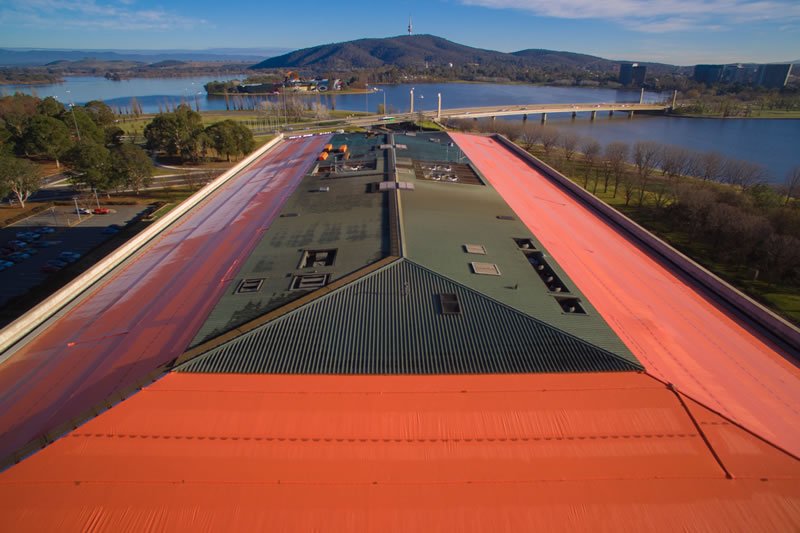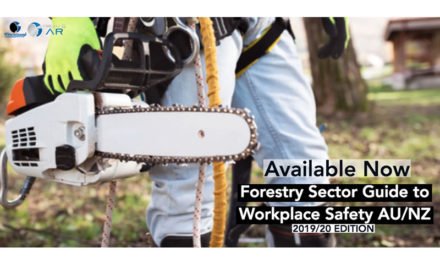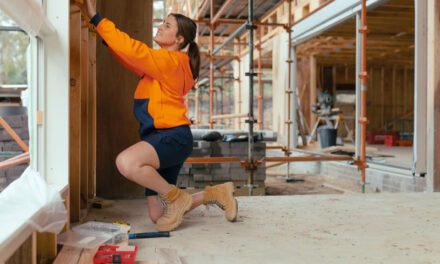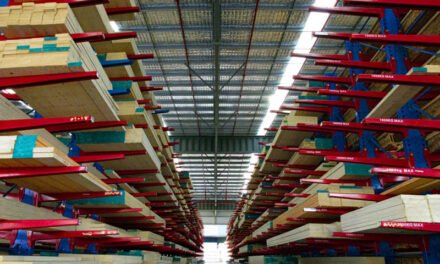If we’re going to have a new normal, let’s make sure it’s a better one. We look at two transformational ideas that are helping to build the future of Australian construction.
For a species that has changed the world more than any other, humans can often be slow to embrace new things unless we have to. But at times like these, we do have to. No matter what happens with Covid, the next few decades will see construction in Australia shift significantly as we grapple with increasing automation on the one hand and responses to climate change – and its mitigation – on the other.
Jobs will be different, homes will be different, and even the ways we build will evolve faster than we’re used to.
The good news is that the timber sector is very well placed to take advantage of these changes, both because our product itself exemplifies ideas of sustainability and responsible carbon storage, and because the skills we already possess are highly transferable within the emerging workplace.
Over the following pages we look at two very different transformational ideas in the Australian construction sector. One is a clever new product driven by an individual, but with a model that can be scaled out to benefit many. The other is an industry body driving both change itself and how the timber sector can meet the demands that come with that change. In both, there are opportunities now and into the future.
Turning disasters around
Matt Lennox had the idea for Stormseal while repairing roofs after the 2007 Sydney hailstorm. As an insurance builder, he saw the enormous damage caused by first the storm itself and then the tarpaulins used as temporary weatherproofing solutions, which offered very short-term protections and added their own risks. He was determined to come up with a better method.
For the next five years, Lennox consulted with John O’Neill, one of Australia’s leading chemical polymer engineers, to develop Stormseal: a bright orange polymer film that heat-shrinks to cover a damaged structure securely for up to a year. Armed with two patents (for the film and the application method), he incorporated Stormseal and then, in 2016, received an Accelerating Commercialisation grant of $450,000 from the Australian Government.
“That grant not only helped us expand Australia-wide, it allowed us to get overseas as well,” says Lennox. “It was an extremely difficult grant to get; there’s a lot of scrutiny with the panel that reviews it. But they not only saw Stormseal as a way to make the country more resilient following storms, they also saw the Stormseal system as being one that could be extrapolated globally, so that allowed us to get into Europe and the US.”
Now, from Canberra to Chamonix, after a big storm goes through, you might see roofs snuggly tucked into a tight wrapping of thick, recyclable orange plastic that is waterproof, fire retardant, UV resistant and resists wind, rain and hail for 12 months.
The work is all done with local contractors, with film supplied through the company’s central, quality-controlled production processes, with volumes that can be quickly scaled up when a major storm is predicted. The training system is as neatly designed as the rest of the company – and it all started with Lennox’s hatred of roof tarps.
“We’ve seen them tied to gas fittings, fences, light fittings… and ripping them all apart. They cause a lot of damage on a house – and how someone hasn’t been hit by a sandbag, I don’t know,” Lennox says. “Every time a tarp fails, which is four times for the average run-of-the-mill claim and can be many more, there’s exponential damage from that failure and also exponential cost.”
He tells the story of one case study Stormseal did in Berowra, NSW. “A lovely older couple, both 85, the house was neat as a pin and got caught in a bad hailstorm. The claim’s original estimate was $52,000 and they had tarp after tarp that failed. The claim ended up costing $286,000 and they were out of home for 328 days.
“And at the end of all that, they just got their home back. It’s not like people go through all of this with tarps flying off in the middle of the night for an improvement, you just get it back the way it was.”
Installer benefits
In the early days, the Stormseal team did the installations themselves. “Inevitably you had that situation where there was a big storm in Melbourne and a big storm in Brisbane at the same time and we had to split our workforce and it was very difficult to manage,” Lennox says.
When he sat down with the government to discuss the Accelerating Commercialisation grant, they re-engineered the business to focus on manufacturing and invested in developing a one-day training program for contractors – generally roofers or carpenters – to become accredited installers.
“Before people can do the Stormseal accreditation course, we stipulate they must hold a current working at heights certificate,” says Lennox. “The reason we did that is entirely safety oriented. On the course itself they learn about the film, how to weld it together, to shrink it, to fix it and tether it to either a timber structure, such as rafters and fascia boards, or a storm-damaged roof, which means going over the top of severely damaged tiles or broken trusses from a tree impact or something like that.”
The company now has training centres in Sydney, Brisbane, Melbourne and Perth, which gives the product a deeper coverage within Australia. Each accredited installer is given a unique login and only they are able to buy the film, which can be shipped Australia-wide, usually overnight.
“We manufacture overseas for those markets because we are conscious of the need to keep the freight and carbon costs low,” Lennox says. “We’ve taken the formula and entered into agreements both in France and then three plants in America. The US took us about two-and-a-half years to get the film and the procurement strategy right. That was a process of vetting the manufacturing capabilities of the actual plant and then having all the legal requirements satisfied with respect to the film formula.”
Each batch of Stormseal film is rigorously sampled and tested and then cross-checked against the company’s global benchmarks. “That’s how we ensure the quality of the film, so we know that when it goes onto a storm-damaged roof, it is going to protect the occupant for the time they need until the permanent repair is made,” says Lennox.
This level of focus on product and installers helps the company to keep its strong reputation growing, but there are also concrete benefits for the contractors, beyond just working with the popular product itself.
“Many of them are already doing work in the insurance space,” says Lennox, “or come into it when they do the Stormseal course. If you’re awarded what they call the ‘emergency make safe’ and you’re called to go out and put the cover on, there’s a higher chance you’ll also be awarded the actual repair job.
“A thing we’ve seen is that businesses have grown three- or four-fold in turnover because they’ve got that make safe. We’ve been working in Canberra since the January hailstorm. One of our contractors put Stormseal on one of the buildings at ANU. They were there on site to quote on the re-roofing, which was just shy of $800,000. That’s a large-scale project that company would never have had the opportunity to even tender for normally. Their price was right and they won the work, so they’re down there now doing the main re-roof.”
More than storms
The covers go on within hours and are warranted for 12 months. Because they’re heat-sealed around the shape beneath, they can fit almost any structure. Several building sites in Melbourne are currently using this to protect their frames or renovations in progress with Stormseal during lockdown.
“We’re developing a new product, Buildseal, that takes this one step further,” Lennox says. “We’ve seen Stormseal used to weather in areas on builds that have had delays so the dry trades can continue work inside with no risk. We realised we could engineer a film with an aluminium substrate on one side that can be applied the same way. We wrap the roof and walls at the start of the program and it not only protects the frame and truss and lets tradies work in the dry: it remains as your permanent sarking.
“So not only are your kiln-dried timbers kept safe from the weather, you don’t lose your tradies for days on end if it starts raining and your schedule stays on track.”
While Buildseal is still in its testing phase, Lennox says they are already looking for more opportunities, many of which are suggested by their contractors and people on Stormseal courses.
“Obviously I’m passionate about the product,” he says. “It’s generally a third of the cost of using tarps over the life of a claim and comes with far less risk because people only work at height the once. Aside from everything else, that helps keep insurance costs down for all of us. But at the same time, we need more jobs and more local manufacture, and this creates both.
“We always say Stormseal is recession proof – it’s driven by Mother Nature, not the economy or politics. A big storm can equal a billion dollars-worth of damage, but all that money is injected straight back into the economy in terms of trades, suppliers and so on. So, as bad as the disaster is, it can be good for the economy. It does make our marketing a bit difficult: we hope you’ll never have to use us, but if you do, you can rest assured you’re getting a good thing.”
For more on Stormseal and courses, visit www.stormseal.com/au
Taller timber
WoodSolutions is celebrating its 10th anniversary this year. An industry initiative designed as a hub of information to encourage more construction in timber, it delivers a mix of expert advice, resources (including webinars and publications) and inspirational case studies, like CHROFI’s shining Maitland Riverlink, below.
In 2016, WoodSolutions added its Mid-rise Advisory Program (MAP). “It had its gestation in an American program called WoodWorks,” says Gerry Neylan, MAP’s original lead and now an advisor. “They were promoting the use of engineered timber as an alternative to steel or concrete. In Australia, some of the timber producers and the then fledgling engineered timber industry decided they’d like to trial a similar program. And the Federal Government decided to match their funding.”
The result was a pilot program to “promote the use of engineered timber and lightweight framing for mid-rise construction, taking lightweight framing above the domestic two-three storeys into six-eight storeys and also using engineered timber such as CLT, glulam and LVL,” Neylan says.
The MAP includes an expert-led team that can provide free and non-commercial advice and support, backed up with a growing library of technical design guidelines (TDGs) and educational and professional events that range from CPD courses discussing new building modalities to detailed project advice on meeting fire and acoustic certification needs for a specific structure.
Unlike the US, where cheap labour has seen lightweight timber construction become a common method for mid-rise apartment buildings, Australia still builds almost uniformly in steel and concrete at levels above the domestic. Since 2016, there have been more than 25 timber-based projects commenced with MAP involvement. But they’ve not all been what was expected.
“Initially we were hoping to target the mid-tier builders, the Tier 2’s and 3’s and 4’s,” Neylan says. “What became apparent was that the real interest was in the larger companies, the Tier 1’s. They saw the opportunity to capture a part of the market that was favouring designs and materials that were sustainable, socially responsible, eco-friendly, with carbon capture and so on – particularly in the university market for student housing, where they were already traditionally active.
“Universities and governments saw opportunities to design and build in the new engineered systems, but the tender market they would traditionally go to lacked experience in building in timber. So instead of having an easy choice from five or six tenders from their usual register, they were having a problem comparing apples to apples with just the two companies. What’s been happening since is that a number of what I call the ’Tier 1.5’ builders are also seeing the opportunities.
Growing out as well as up
With the MAP now beyond its pilot phase, Jennifer Cunich has recently succeeded Neylan as lead program development manager. Like him, she has long experience in the property sector, both hands-on and in planning and leadership roles.
“We’ve had some fabulous projects,” she says, “Particularly in Victoria, with the Ballarat and upcoming Bendigo GovHubs, student accommodation at both Monash and La Trobe and the Geelong Civic Precinct. There’s a number of mid-rise apartments underway – mainly in capital cities – however, we are looking into regional centres across Australia.”
Like Neylan, Cunich is looking for ways to encourage more smaller builders into the market. They both describe it as a complex problem. Smaller businesses rely on established relationships, so moving to a new model not only requires a new set of suppliers, it can risk alienating the old ones and causing ructions when they go back for the next non-timber project.
“There’s also a problem for them [finding fabricator partners],” says Neylan, “because the majority of wall frame and roof truss manufacturers are mum and dad operations and they don’t have the capacity to take on the financial risk.”
Neylan and Cunich point out that most fabrication for tall timber structures is done by a small number of big fabricators who can afford both the cost of procuring materials for a larger building and adjusting to the payment regimes of builders at that level. “Most fabricators might typically have terms of seven days,” says Neylan. “Whereas the mid-rise developer might want 60 or 90 days, even 120.”
Cunich agrees. “It is a cash flow issue for them. You’re asking them to stop the work they know brings money in and instead take a risk for something that might grow their business significantly, but doesn’t have a safety net. Particularly with Covid, they’re not going to take a risk at this stage.”
Industry partners have stepped up to find solutions, with EWP (and some light timber) manufacturers providing training and giving design advice that shows ways smaller fabricators and builders can use their products cost-effectively in three- and four-storey structures, often with no need for any extra investment beyond floor space.
“Then the only gap in the process is the designer,” says Neylan. “Once you get to three or four levels, you have different configurations of material and therefore loads – vertical loads and applied loads – and they get a bit nervous there.”
Here, the WoodSolutions TDGs and advisors combine with the manufacturers’ design services and guides to give confidence to those new to the material.
Developers, often the gatekeepers in the industry, aren’t a problem, Neylan says: “They just ask ‘is it cheaper and is it faster?’ And since it is, they say, ‘I’ll have a look.’”
Far from being daunted at the prospect of changing the industry during a downturn, Cunich suggests that the social issues that have come to the fore during Covid make this the ideal time to show how building can help solve problems. “Timber construction is a viable option for social housing, affordable housing, build to rent, etc, because it’s fast,” she says. “European producers can assist the local market in supply capacity; all we need is for builders to be more comfortable with timber and willing to change their ‘business as usual’.”
Next steps
Recent years have seen several flagship tall timber structures on the East Coast, from 25 King in Brisbane to the Wildlife Retreat at Taronga and Melbourne’s Library at the Dock, as well as multiple educational projects run by the MAP and its members.
“There’s nothing better than being able to direct someone to an impressive structure built in timber,” says Neylan.
“People see these buildings and think, ‘Isn’t that a great alternative to steel or concrete!’ Because the message we are really keen to reinforce is that timber is the only renewable building material.”
The success of such buildings is a powerful argument in favour of their materials and model. For designers and engineers wondering how to replicate it, the MAP team has TDGs that answer most timber design questions as well as the full-scale, three-storey Holmesglen Mid-rise Demo building, using materials from LVL to light timber with seamless connections on show.
Despite – or perhaps because of – the economic downturn, Neylan and Cunich expect the growth in tall timber to speed up, thanks to the significant cost and build time efficiencies it makes possible.
Neylan says, “I think our initial partners always realised this was a three- or four-year project before things started to bear fruit,” he says. “Partly because of the lack of education and experience, but also these projects typically take three or four years before they get built. We’re just at the interesting stage now.”
Part of this stage involves engaging with government bodies acting as developers. Cunich says, “We’ll been revisiting councils in Victoria that have carbon-neutral or carbon-zero policies, but don’t appear to do anything with them. We’re asking why not?”
It’s a fair call: despite many councils proudly declaring they support sustainable building, fewer follow through. In some cases it’s because they approach timber as a fresh problem with novel solutions, rather than using the efficient models already shown to work. “I’ve seen a number of designs of civic buildings in timber which are totally irrational,” says Neylan. “The design principles are completely unsuited to timber and you can end up with a crazy design with a crazy price. Then the next time that council has a project, they’ll say, ‘Oh, we tried it in timber, but it was just ridiculous. It was three times what we’d expect to pay!’
“It should be cheaper. But because they get off on the wrong foot, it’s a cumulative effect: wrong design, wrong application, wrong price, wrong decision making.”
The MAP targets architectural and engineering practices in particular to combat these issues, as well as leading talks and workshops at universities. Neylan says he sees a lot of young professionals “who are absolutely passionate about learning more about timber. They see that as a way of getting up the ladder in the firm and establishing a role for themselves.”
“We’re working within a broader framework,” Cunich says. She mentions FWPA’s educational programs from schools to the ‘ultimate renewable’ ad campaign, but has her sights set even higher.
“There’s a huge opportunity for us to become thought leaders in this space and create a whole new environment around liveable, sustainable building. And that’s the sort of thing that will see business headquarters relocating to Australia and attract opportunities around innovation in other industries as well. These buildings are quick to go up: if we’re smart, we will be building a bright, new future.”
For more, visit www.woodsolutions.com.au/mid-rise
Image: Stormseal on the National Library in Canberra after the 2020 hailstorm. The polymer helped the library reopen while waiting on re-roofing











